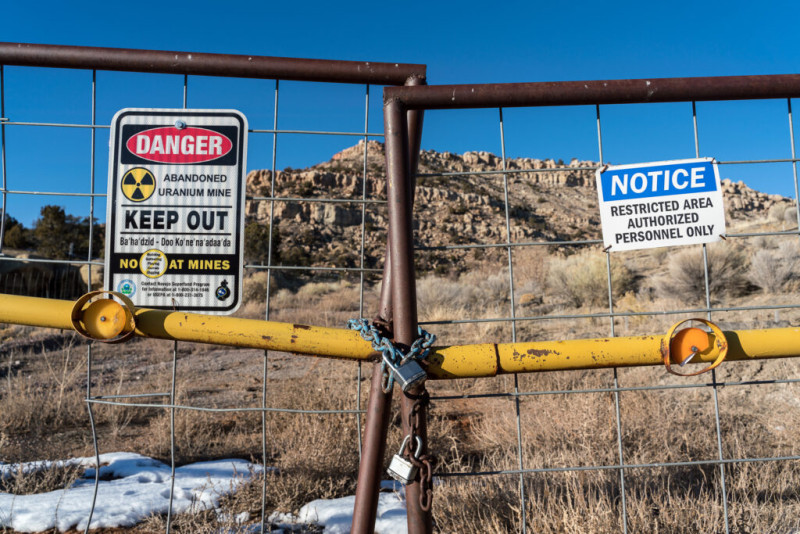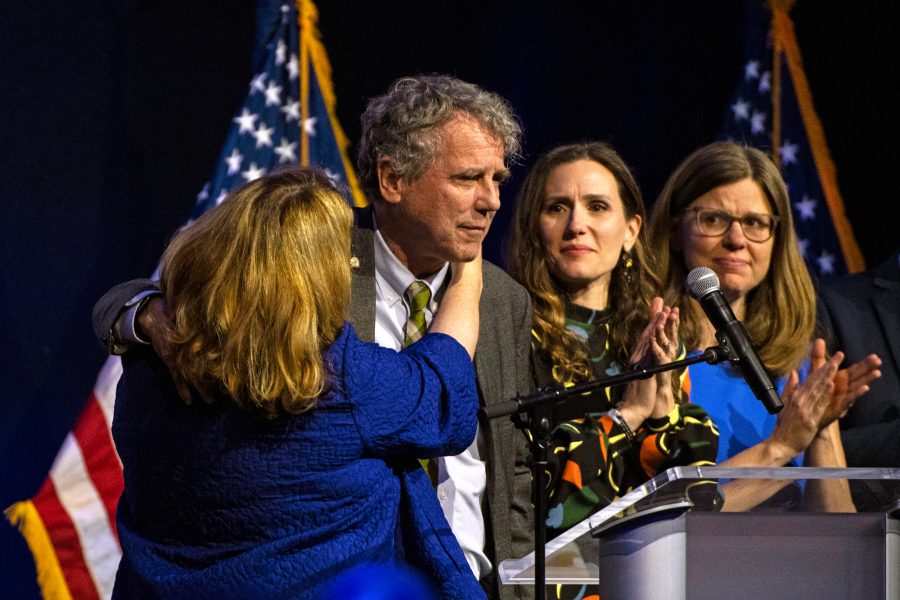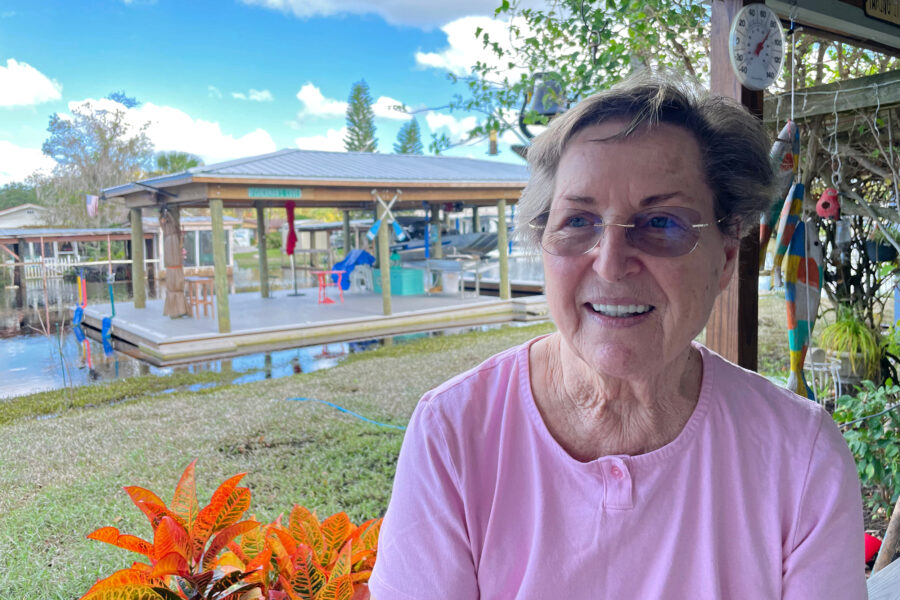Tribes Meeting With Inter-American Commission on Human Rights Describe Harms Uranium Mining Has Had on Them, and the Threats New Mines Pose
Members of five tribes told the Inter-American Commission on Human Rights that Indigenous communities in the United States continue to suffer from the legacy of uranium mining and will face a persisting threat if new proposals for uranium extraction in the West are authorized during a hearing on Feb. 28 about mining to support the nation’s nuclear industry.
“The U.S. has rarely, if ever, secured tribal consent for uranium production on and near tribal lands,” Eric Jantz, legal director of the New Mexico Environmental Law Center, said. “The cost of the government’s lopsided policies have disproportionately fallen on Native communities.”
The Inter-American Commission on Human Rights is an organ of the Organization of American States. Its mission is to promote and protect human rights in member states, including the U.S.
Members of the Navajo Nation, Ute Mountain Ute Tribe, Havasupai Tribe, Northern Arapaho Tribe and Oglala Sioux Tribe requested the hearing to tell commissioners about the ramifications of uranium mining on their communities and the inadequate communication and response by the U.S. government, Jantz explained.
We’re hiring!
Please take a look at the new openings in our newsroom.
See jobsThe Red Water Pond Road Community on the Navajo Nation is in an area behind the red rock formations of Church Rock, New Mexico. It is situated among two former uranium mines and one uranium mill site. In 1979, the tailings impoundment dam at the mill site failed and released the largest amount of radioactive waste ever spilled in U.S. history.
The dangers and hazards of past mining activities caused many community members to move from their traditional homelands.
Teracita Keyanna, who is Diné, said she decided to move from Red Water Pond Road to nearby Gallup, New Mexico.
“I knew the move would provide my children with the safest environment, free from uranium exposure,” Keyanna said. “But when you move off of your tribal lands, your ability to practice your language and your culture becomes more and more challenging.”
She told the seven-member commission that she does her best to keep her children connected to the community by returning whenever possible.
“Our children’s rights to a clean environment have already been affected,” Keyanna said. “Our children’s freedom to practice their culture has been impacted before they were born.”
Tonia Stands is Oglala Lakota from the Pine Ridge Indian Reservation in South Dakota.
Uranium mining has contaminated water sources, caused health problems and harmed places used for traditional practices, like sweat lodges, she said.
“We may be the poorest county in the country, but we are rich with our cultural and our spiritual practices,” Stands said.
South Dakota has received numerous proposals for uranium mining, both for new operations and for the reviving of old sites. The price of uranium has increased in recent years to meet nuclear power demands, which are increasing due to the role many atomic energy supporters believe the technology can play in the clean energy transition. “BofA Global Research forecasts that spot uranium prices will reach $105 a pound this year and $115 a pound in 2025,” the Wall Street Journal reported in January. Proposed mining areas in South Dakota include the Black Hills—sacred to the Lakota and other tribes in the region.
On March 6, South Dakota Gov. Kristi Noem signed a bill that amends state law to give authority to the governor to enter into agreements with the U.S. Nuclear Regulatory Commission. State Rep. Mike Weisgram, who sponsored the bill, told House members the bill was the first step in allowing a utility company to own and operate a nuclear power facility in South Dakota. “This is getting the state ready,” Weisgram said.
“We may be the poorest county in the country, but we are rich with our cultural and our spiritual practices.”
In northern Arizona, Energy Fuels Resources started digging out uranium from its Pinyon Plain Mine in January. The mine is in the Baaj Nwaavjo I’tah Kukveni—Ancestral Footprints of the Grand Canyon National Monument and near Red Butte, which is sacred to the Havasupai. President Biden designated the monument in August 2023. Tribes advocated for protecting the area because of cultural ties to the land. The designation bans new mining claims within the monument’s nearly 1 million acres, but the Mining Law of 1872 prevents preexisting claims, like Pinyon Plain Mine, from being revoked.
Energy Fuels plans to transport the ore to its White Mesa Mill, a few miles from the Ute Mountain Ute Tribe’s White Mesa community near Blanding, Utah.
The planned route includes roads that cross the Navajo Nation, where it is illegal to haul uranium, according to a law tribal officials authorized in 2012. But the tribal law cannot be applied to state highways like those that make up the route to the White Mesa Mill, according to the Navajo Nation Office of the President and Vice President.
U.S. officials from the Department of the Interior, the Environmental Protection Agency and the Nuclear Regulatory Commission participated in the hearing and responded to issues raised by the Indigenous community members.
Assistant Secretary for Indian Affairs Bryan Newland acknowledged the role tribes had in advancing the country’s national security, which included mining and processing of heavy metals like uranium on or near tribal lands. However, he did not mention how tribes were not consulted when it came to getting permission for mineral extraction or for conducting nuclear testing near their communities.
“Today, the process that we use to engage with tribal nations looks much different than the process the federal government used in the past,” said Newland, a citizen of the Bay Mills Indian Community in northern Michigan.
The actions the U.S. government now takes in consulting with tribes are guided by presidential executive orders and federal laws, he explained. For the Biden administration, this means working on strengthening and deepening relations with tribes, including Biden’s reaffirming of an executive order from November 2000 that centers on how federal departments and agencies engage with tribes, he said.
The administration’s interagency working group on mining laws, regulations and permitting released a report last year that had a section on tribal consultation and engagement and recommendations for improving that process.
In April 2022, the Nuclear Regulatory Commission had a field hearing in the Red Water Pond Road Community. The visit was the commission’s first on-site hearing in 40 years. At the time, commissioners were reviewing a request by United Nuclear Corporation to amend its license to dispose of waste material from the Northeast Church Rock mine site by placing it on top of the tailings impoundment at the company’s existing uranium mill tailings site. The commission approved the company’s plan in February 2023.

During the meeting with the human rights commission, John Lubinski, director of the NRC’s Office of Nuclear Material Safety and Safeguards, cited the 2022 field hearing as an example of community outreach by the agency.
“The NRC respects the sovereign rights of federally recognized tribes in the development and implementation of agency policies and actions that have implications for tribal nations,” Lubinski said.
Keyanna, who lived in the Red Water Pond Road Community, reminded Lubinski of the windy conditions that caused dust and other debris to blow into the shade house where the commission met with residents in 2022.
“You actually got to see how the community has to deal with the material that was previously pushed into the mining area. Where it just flew right over all of us,” she said. “Why is the government just feeling like we’re disposable? We’re not.”
Arif Bulkan, rapporteur on the Rights of Indigenous Peoples and member of the Inter-American Commission on Human Rights, asked the government officials whether the U.S. upholds the principle of free, prior and informed consent, which gives Indigenous peoples the right to give or withhold their consent for any action that would affect their lands, territories or rights.
“It’s been held by this commission that protecting the particular relationship between Indigenous peoples and their lands and resources is linked to their very existence, and thus warrants special measures of protection,” Bulkan said.
Another commissioner asked about compensation to community members and to others impacted by uranium mining, like former workers.
The U.S. Department of Justice’s Radiation Exposure Compensation Act compensates former workers involved in uranium mining activities and community members exposed to nuclear activities. But to receive compensation, applicants must meet the program’s criteria, including employment in the industry between 1942 and 1971 and diseases like lung cancer or pulmonary fibrosis. The DOJ reported last year that as of Dec. 31, 2022, the program has received 7,704 claims from tribal members, who represent 24 federally recognized tribes. Of those claims, 5,310 have been granted.
The RECA program is expiring this year unless extended by Congress.
On Feb 29, U.S. Sen. Josh Hawley, R-Mo., introduced a bill to reauthorize and expand the program, which passed the Senate on March 7. It will now move to the House of Representatives for consideration. The White House has issued support for the bill.
“The President believes we have a solemn obligation to address toxic exposure, especially among those who have been placed in harm’s way by the government’s actions,” the White House said in a statement on March 6.
“We owe it to our constituents who have been exposed to government-caused radiation to extend and update this program as soon as possible,” Hawley wrote to his Republican colleagues in February.
“The government lied to our constituents time and again about their exposure to nuclear radiation,” he wrote. “This legislation is the least the government can do to put right this historic wrong.”
Jantz, of the New Mexico Environmental Law Center, outlined to the commission the group’s recommendations, which include a moratorium on new uranium mining and processing on or near Indigenous lands or near important cultural sites until adequate remediation is conducted and consent from tribes is obtained.
“Our communities and our lands have endured enough,” said Big Wind Carpenter from the Northern Arapaho Tribe of Wyoming.
The Commission on Human Rights did not make any decisions or directives to the U.S. officials.
“We stand here as a commission to continue to monitor the situation closely,” Commission President Roberta Clarke said. “To receive information, to pay attention and, also, to communicate with the states as we need to, to submit the concerns of the communities that we are serving.”
Share this article
Disclaimer: The copyright of this article belongs to the original author. Reposting this article is solely for the purpose of information dissemination and does not constitute any investment advice. If there is any infringement, please contact us immediately. We will make corrections or deletions as necessary. Thank you.







